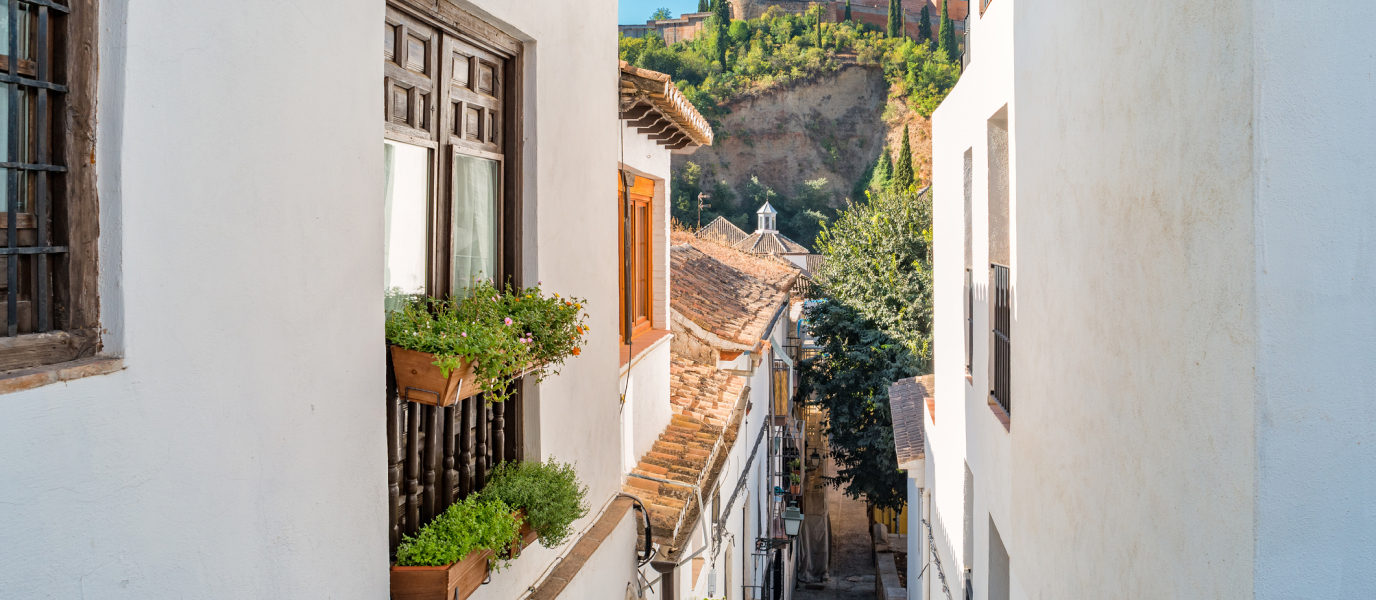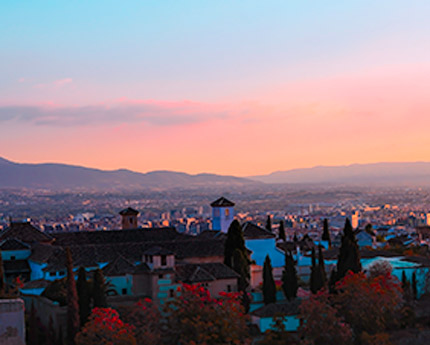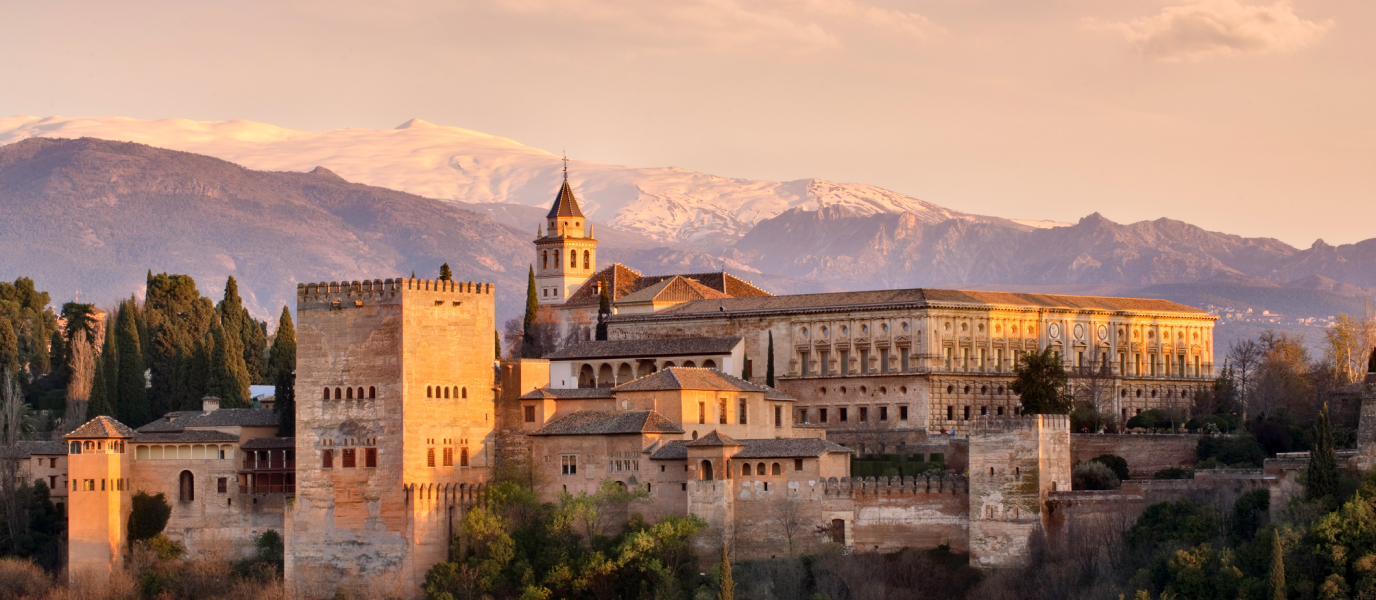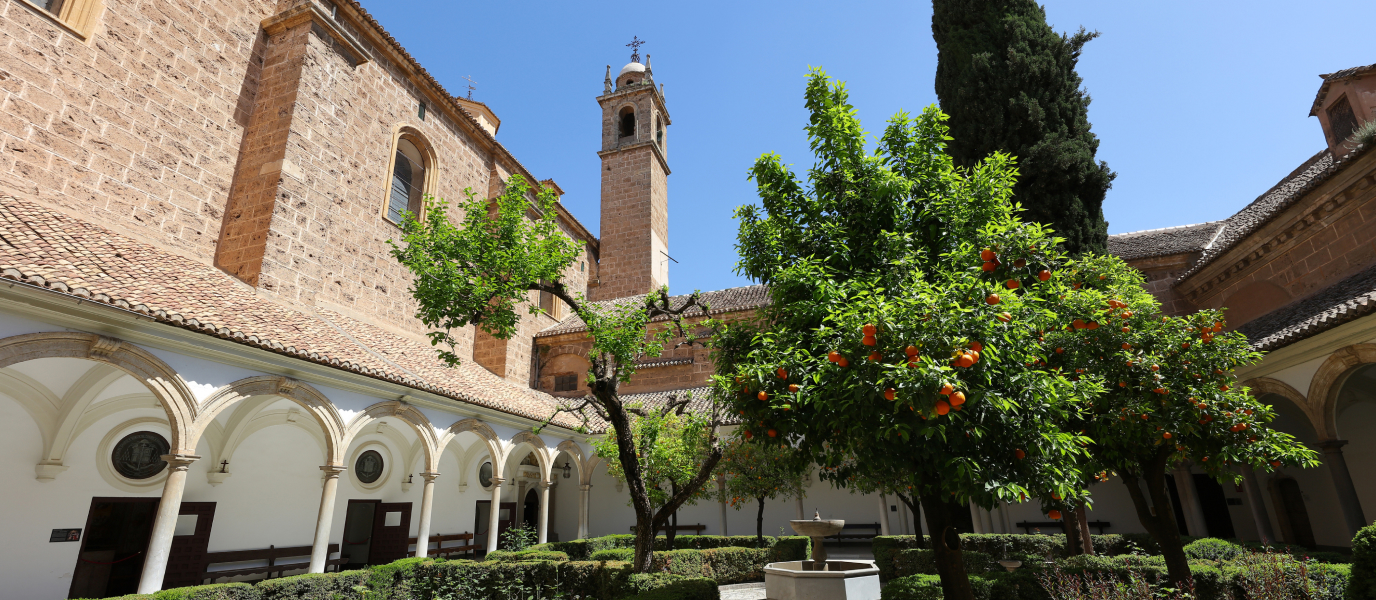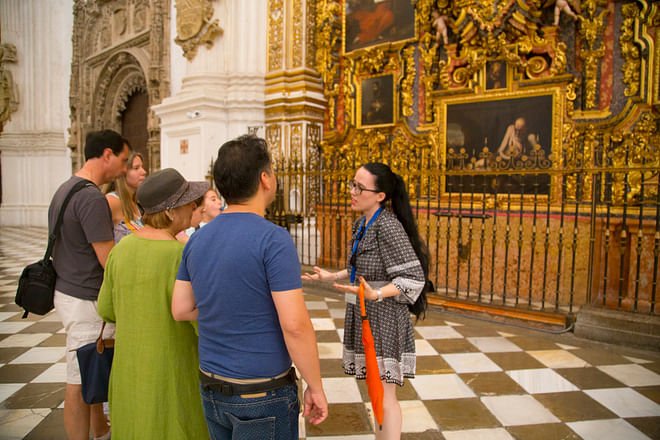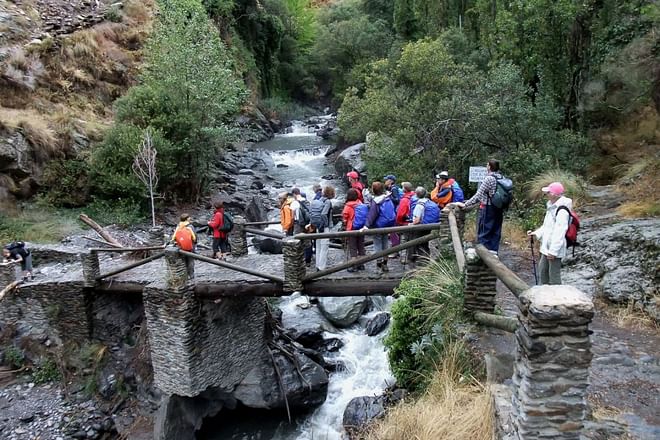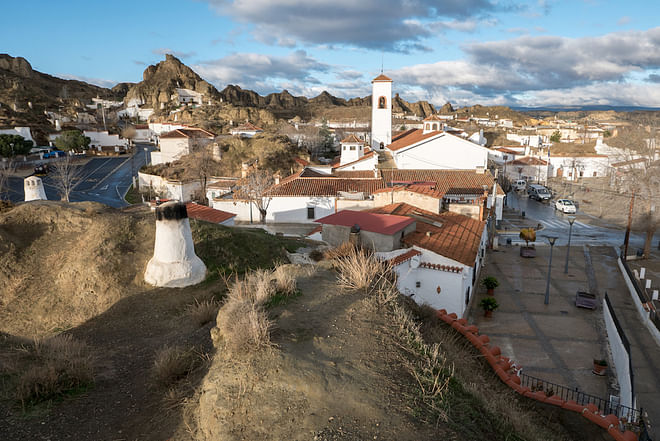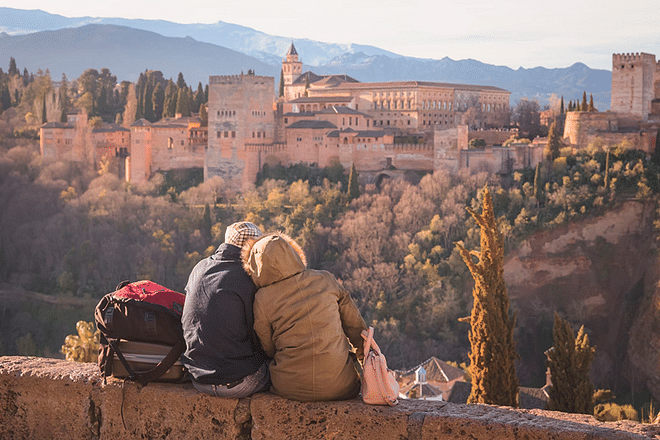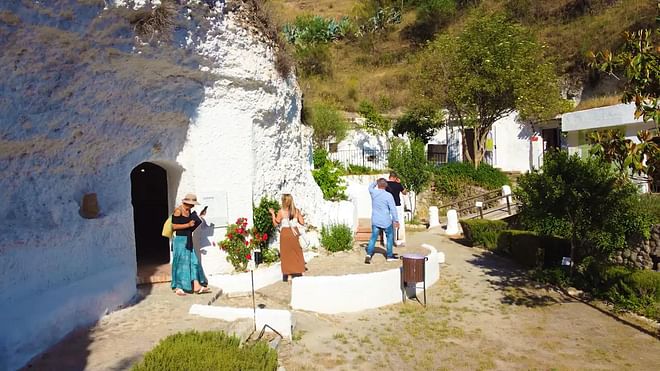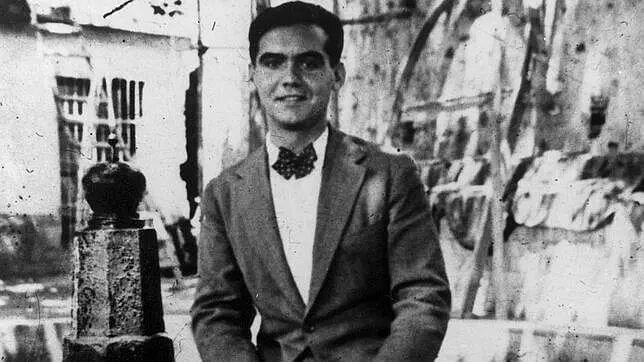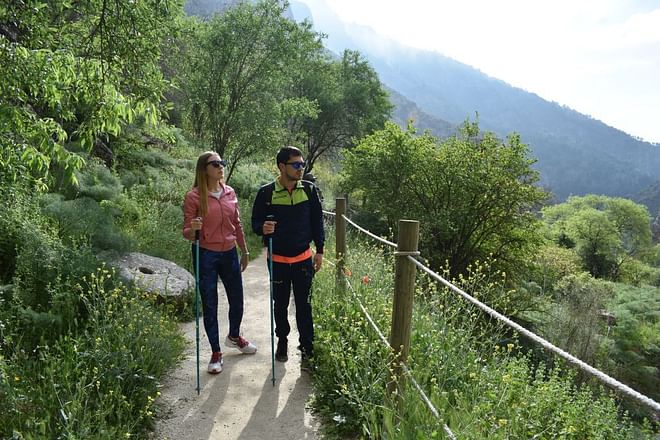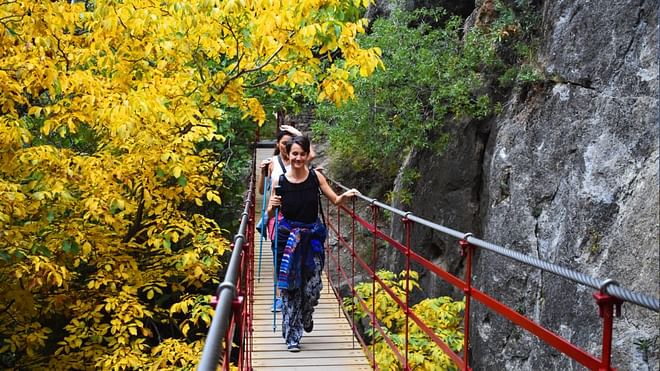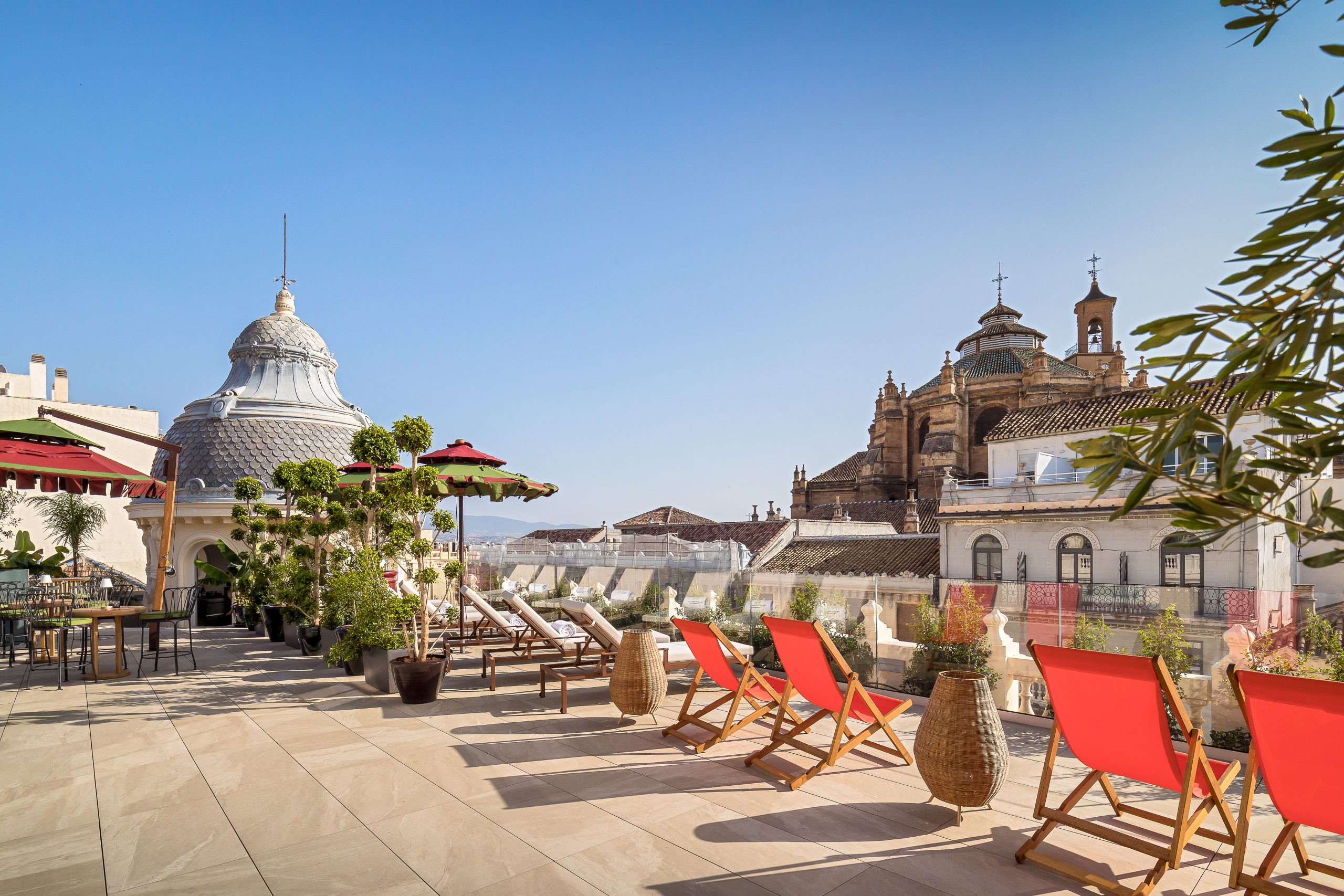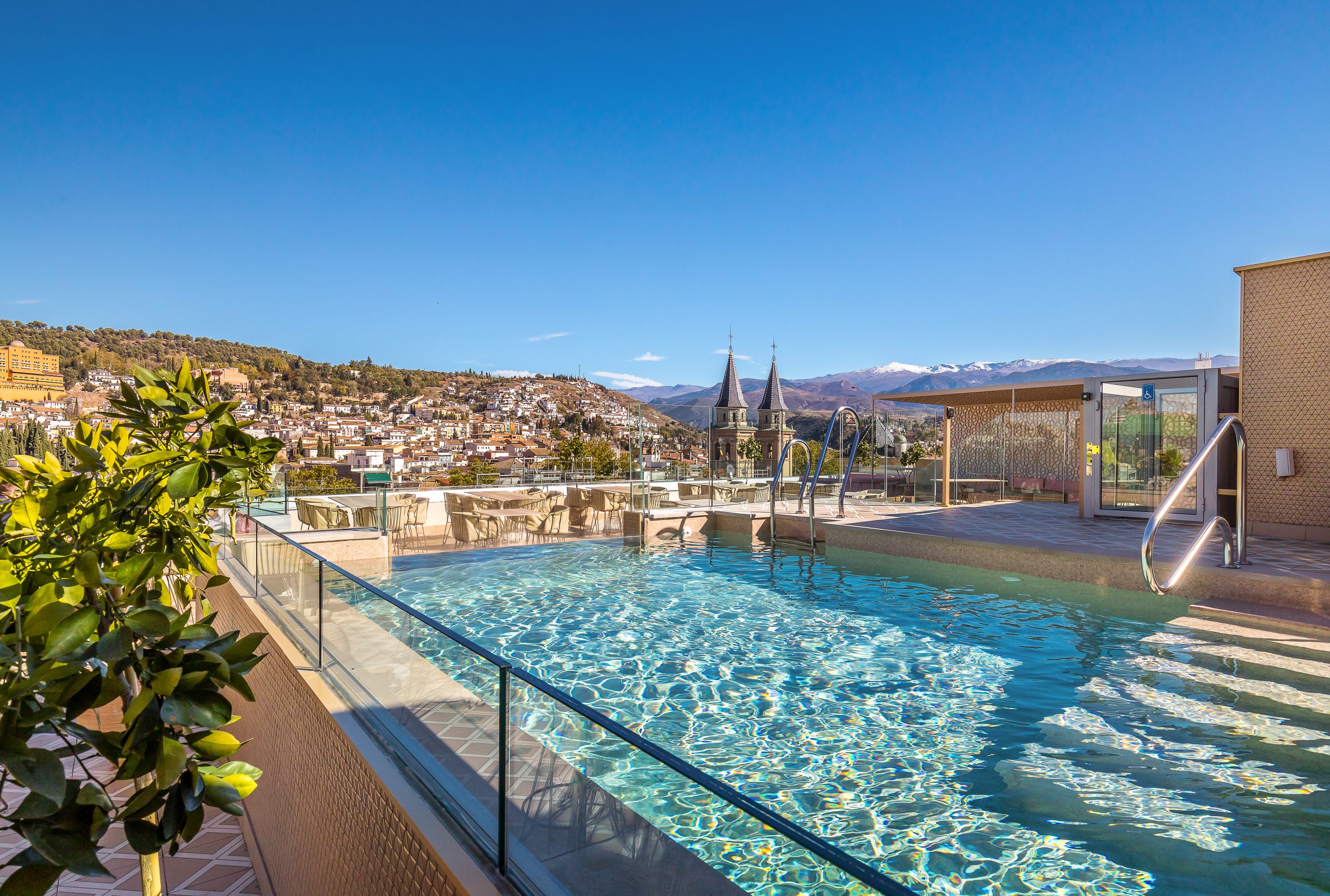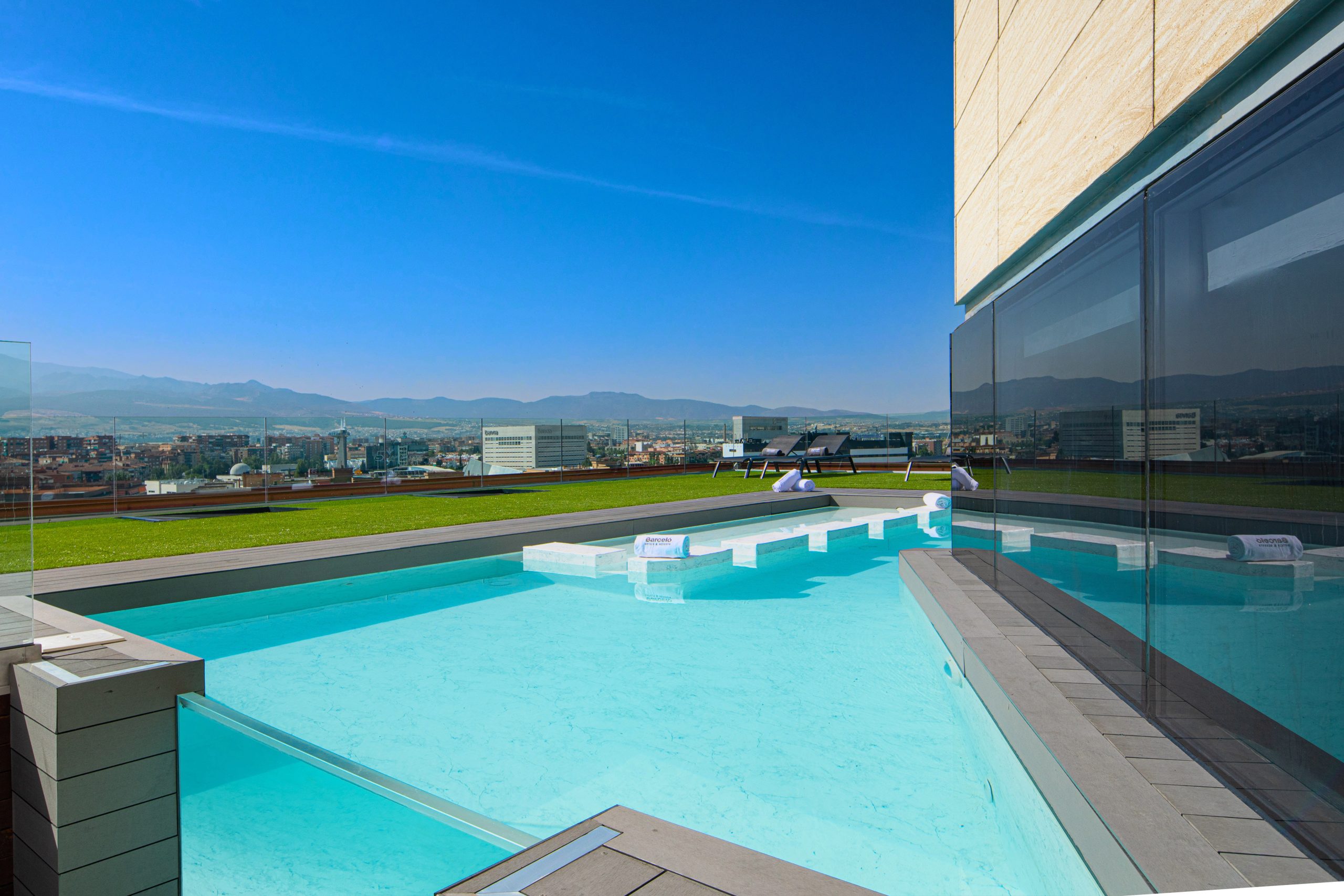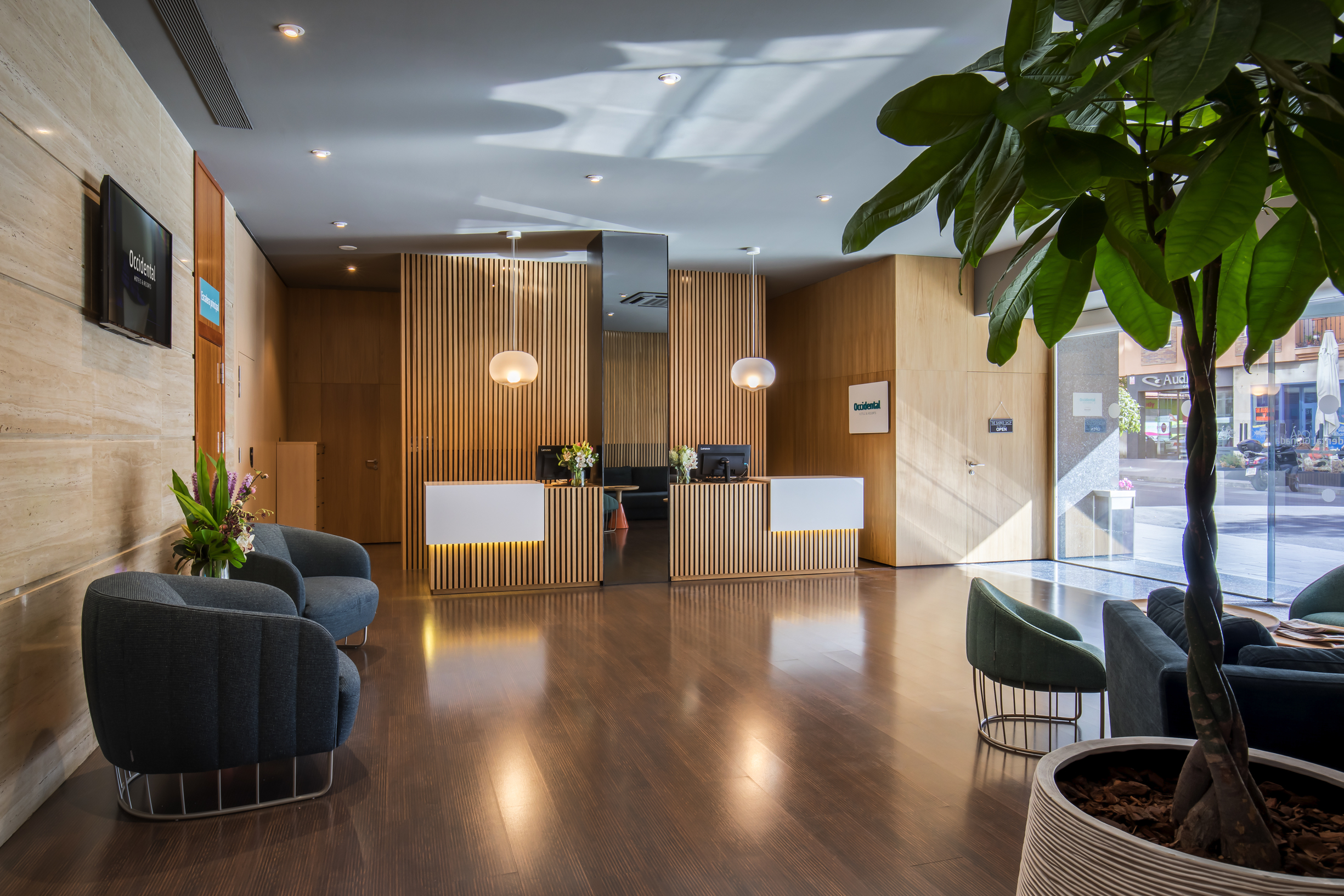Quite a few tourists have unsuccessfully tried to find Paseo de los Tristes (The Promenade of the Sad) on a map. The issue does not lie with GPS systems but rather with the fact that the name by which many people refer to the most romantic and bohemian street in Granada does not appear on street maps. Instead, this lovely avenue with stunning views of the Alhambra and that follows the course of the Darro River between the Moorish bridges of Chirimías and Aljibillo is listed as Paseo del Padre Manjón, its official name. The popular nickname was the result of an interesting tale. In the 19th century, funeral processions on the way to Granada’s San José cemetery on Sabika Hill once passed through here. Many people refused to climb Cuesta de los Chinos to the graveyard and instead chose to say their last goodbyes to the deceased at this point, so it is easy to imagine that the street was not a cheerful place in those days. Luckily, today it is easy to drown one’s sorrows on Paseo de los Tristes whilst gazing at the Alhambra from any of its bustling bars, where it is almost mandatory to try the traditional local tapas.
The Casa de las Chirimías festival
On the western end of the street, we come across Casa de las Chirimías, which faces an old Moorish bridge that was rebuilt in 1882 and has the same name. This baroque building shares ties with the origin of Paseo de los Tristes because it was constructed in the 17th century, shortly after the people of Castril granted the land to build the street in 1609. This was supposedly done, in part, to make the area more presentable after it had been levelled due to a large explosion at a nearby gunpowder workshop.
Ironically, what would later be known as Paseo de los Tristes in the 19th century—at the time it was called Paseo de la Puerta de Guadix—became a regular setting for local festivals such as bullfights and cane tournaments, which were usually accompanied by shawm music played by musicians located on the second floor of Casa de las Chirimías. The mayor and municipal leaders presided over the celebrations from the first floor. This cheerful and festive air of the street, in contrast with its sad nickname and romantic views of the Alhambra that can become melancholic, has lived on over the years. Until a few decades ago, flamenco song and dance performances took place on Paseo de los Tristes during the Corpus Christi festivities, and it is currently an improvised stage for buskers who play all types of musical styles for terrace customers.
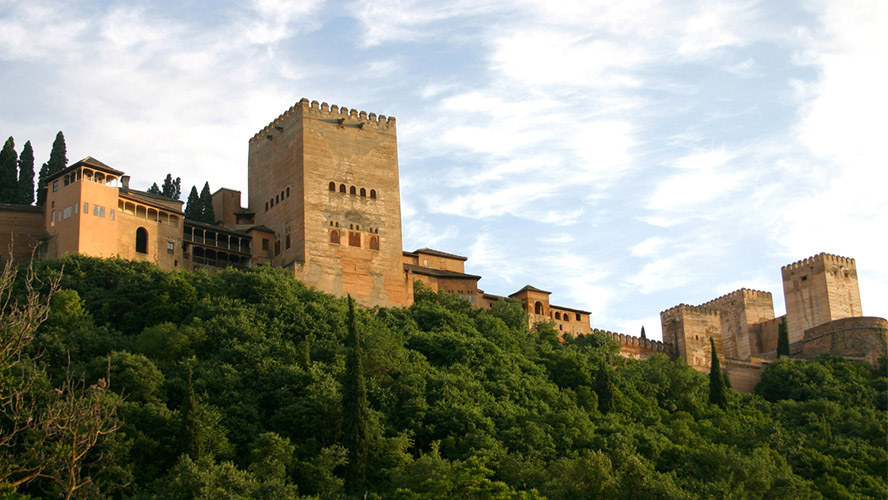
In memory of its flamenco tradition, a statue of the gypsy dancer and choreographer Mario Maya was erected adjacent to Casa de las Chirimías. This acclaimed artist, who became established in the tablaos of the nearby Sacromonte quarter, won the National Dance Award in 1992.
Hotel Reuma, a cursed building
Facing Paseo de los Tristes, under the shade of the Alhambra on the other side of the Darro River, appears the solitary figure of a building that looks like a haunted house. It is the abandoned Hotel Bosques de la Alhambra, built in 1908 in the garden of the since-demolished Carmen de Santa Engracia, and it seems to be cursed.
Although it opened on 20 May 1910, it operated for only two years because guests could not bear the hotel’s excessively humid and cold atmosphere due to its shaded location on Sabika Hill. Several years after the hotel closed in 1916, the building was inexplicably reopened as a hospital for a period of time (unfortunately for its unlucky patients, particularly those with rheumatism). After the building was abandoned, a number of tales emerged about the ghosts of patients wandering its hallways. Since then, the old hotel has been used as a lodge, a dressing room for actors performing in plays and zarzuelas, and a soap and hemp string factory.
The Alhambra Board of Trustees acquired the property in 2000 and it remains abandoned as its destiny hovers between demolition or restoration for cultural projects that never seem to take shape. In the meantime, locals continue to ironically refer to it as Hotel Reuma (Rheumatism Hotel).
Granada’s enchanting Paseo de los Tristes at night
Night-time is definitely the best moment to walk along the hundred-year-old cobblestone promenade of Paseo de los Tristes. The magical views of the illuminated Alhambra and the gurgling sound of the Darro River transform this evening stroll into a bucolic experience that perfectly defines what some people refer to as the ‘spell of Granada’. After stopping to look at the fountain located in the middle of the promenade, which dates back to 1609, the best alternative is to find a table at a terrace along the street and feast on local tapas whilst taking in the ancient walls of the Alhambra and becoming immersed in the music played by buskers. Stewed oxtail, aubergine with honey, migas, the classic requeté and more. The bars serve all types of specialities with every drink and the portions are generous, so consider this your dinner. With three or four beers, you are set!




































































